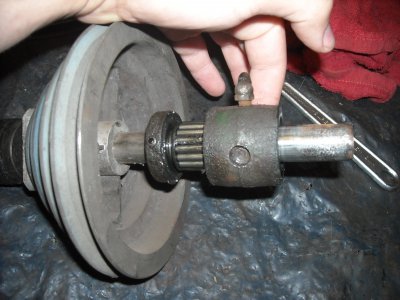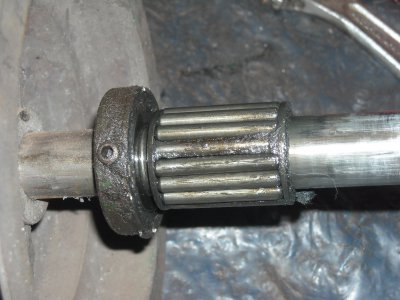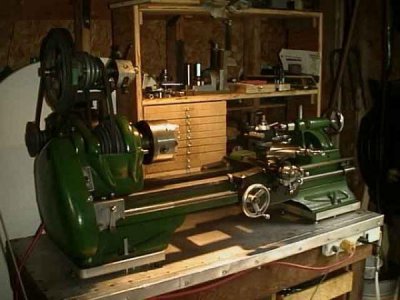- Joined
- Sep 7, 2019
- Messages
- 674
Howdy gents! For a long time I've been using my Atlas lathe on the low range only. The reason is that years ago when I restored this machine I tried high range and it had a vibration. That, and since I was new to running a lathe the high speed made me a little bit nervous...
Well now I want to take advantage of all the speeds this lathe can offer. I tried high range just today and the vibration I remember is not as bad as I remember. On the highest speed there's a very slight shake but I don't think it would cause a problem. So my first question is what should I check to track down a high speed vibration? I'd like the machine to run silky smooth on the highest speed if possible.
Next question, what's the factory solution for lubricating the jack shaft? Or is it called a counter shaft?
I've been pumping some grease (Lucas X-tra Heavy Duty) into the fittings on occasion but when running in high range the grease flings out in small droplets. You can see the grease on the wall behind the machine. Of course some of it also flings forward onto the operator.
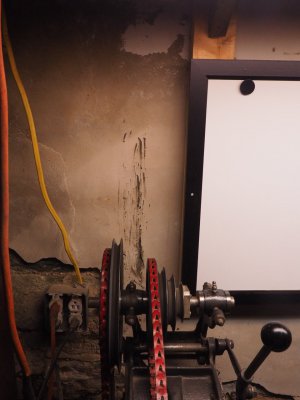
I seem to remember something about felts to seal the shaft collars. Does anyone have a factory spec on those felts or perhaps a place to get reproduction parts? When I restored the lathe I don't remember if it had felts there or not.
Here's a few more shots of the bearings.
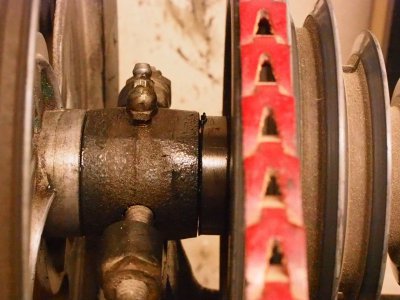
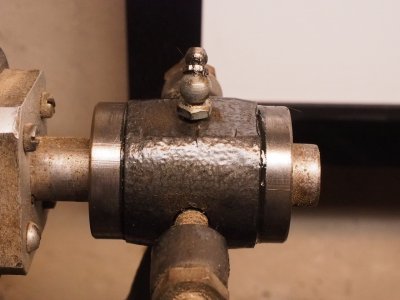
Thanks for reading!
Well now I want to take advantage of all the speeds this lathe can offer. I tried high range just today and the vibration I remember is not as bad as I remember. On the highest speed there's a very slight shake but I don't think it would cause a problem. So my first question is what should I check to track down a high speed vibration? I'd like the machine to run silky smooth on the highest speed if possible.
Next question, what's the factory solution for lubricating the jack shaft? Or is it called a counter shaft?
I've been pumping some grease (Lucas X-tra Heavy Duty) into the fittings on occasion but when running in high range the grease flings out in small droplets. You can see the grease on the wall behind the machine. Of course some of it also flings forward onto the operator.

I seem to remember something about felts to seal the shaft collars. Does anyone have a factory spec on those felts or perhaps a place to get reproduction parts? When I restored the lathe I don't remember if it had felts there or not.
Here's a few more shots of the bearings.


Thanks for reading!

